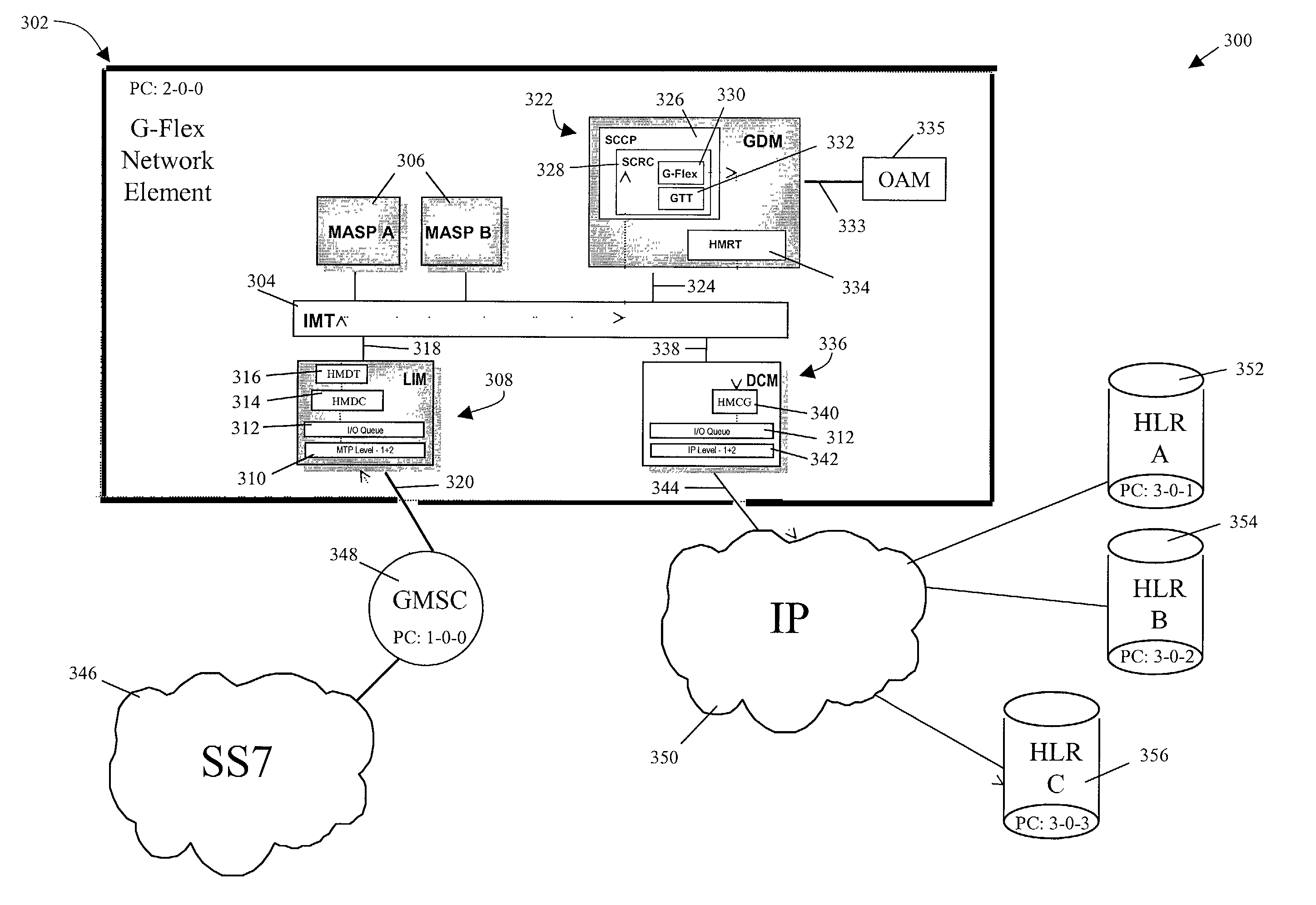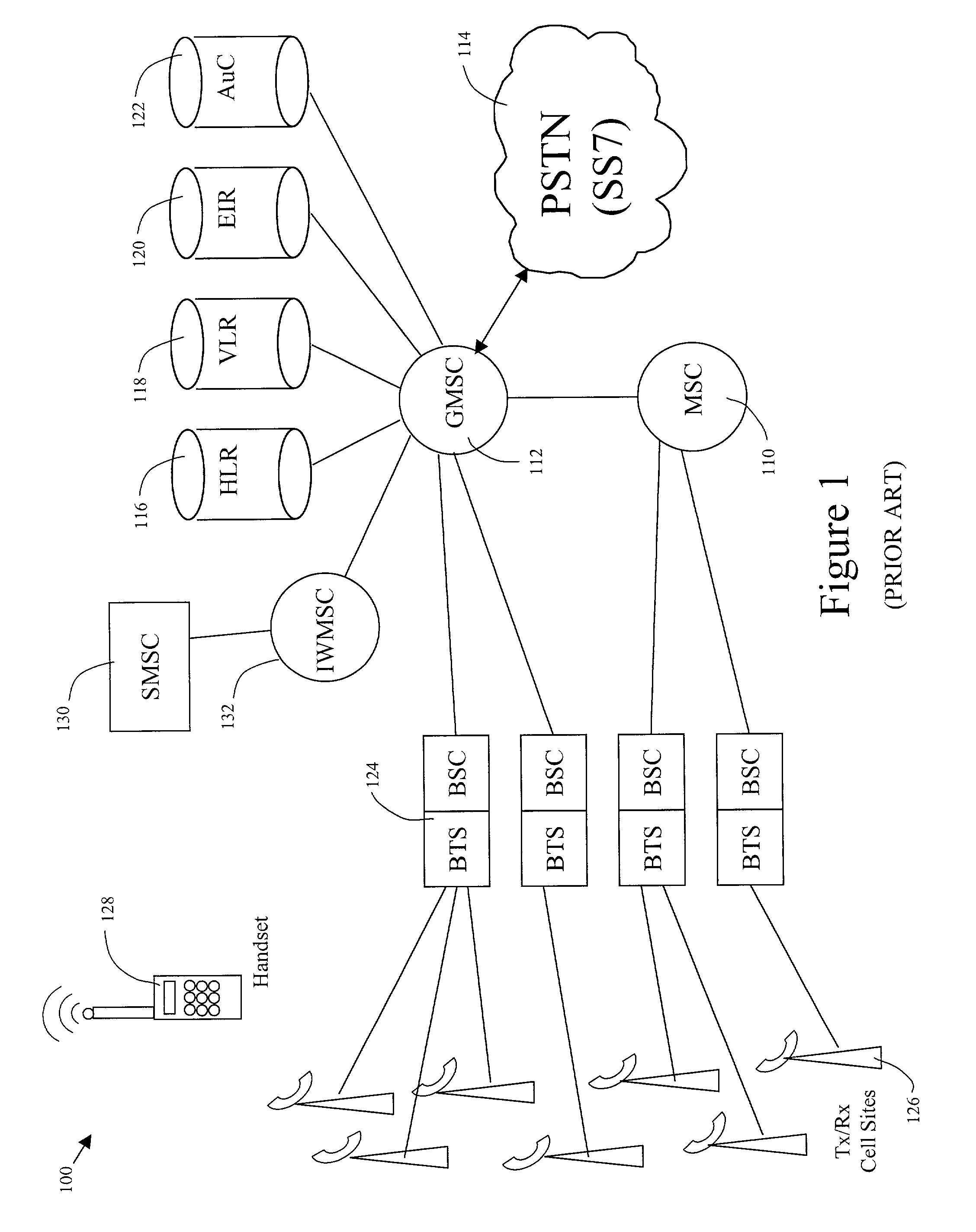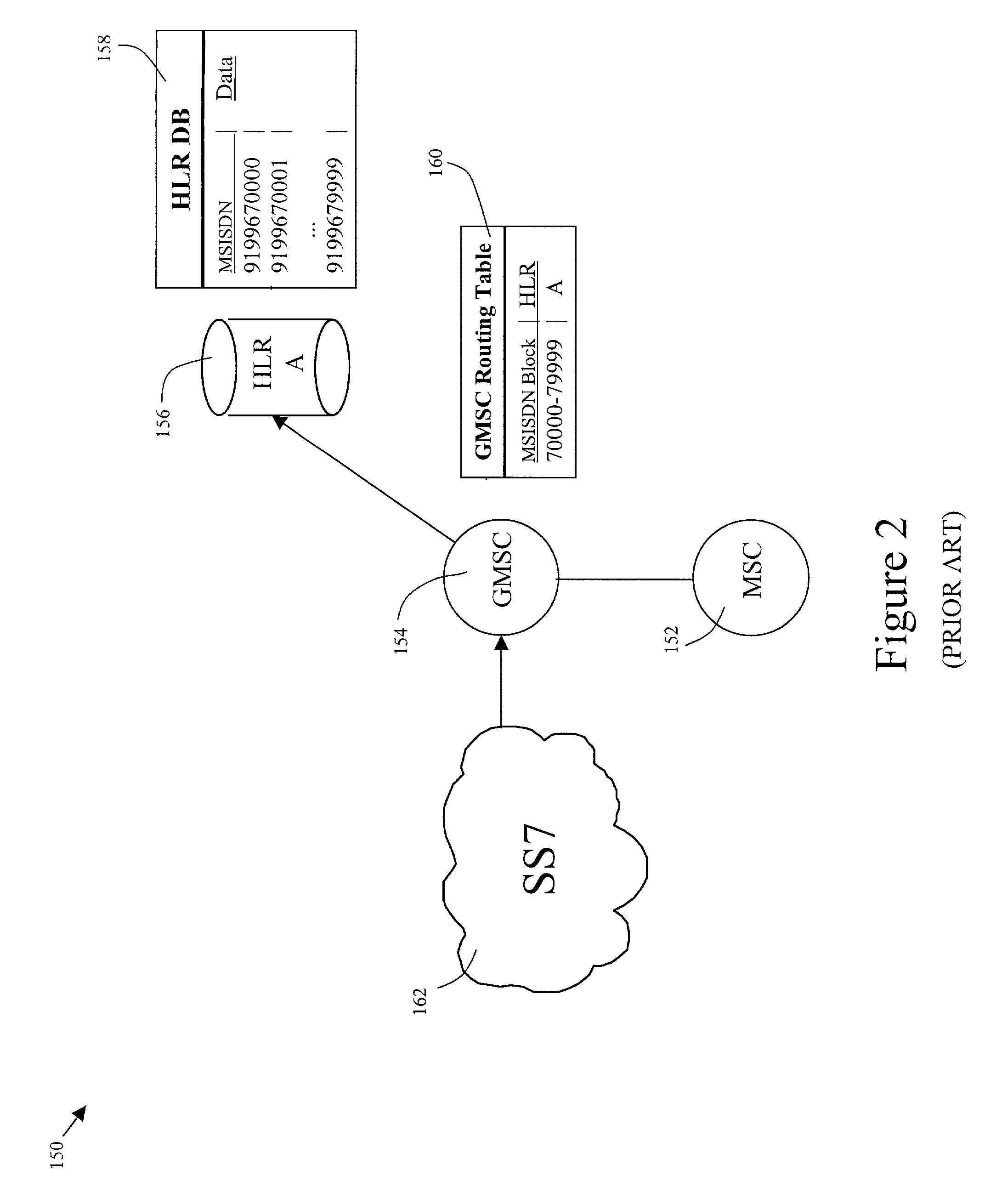Methods and systems for routing messages in a communications network
a communication network and routing technology, applied in the field of routing of signaling messages in a communications network, can solve the problems of limited routing capability of an msc or a gmsc, less than efficient use of installed resources, and service providers are not able to alter the assigned blocks of assigned numbers within a given hlr unit, so as to achieve the effect of increasing flexibility in allocating mobile identification numbers among hlrs
- Summary
- Abstract
- Description
- Claims
- Application Information
AI Technical Summary
Benefits of technology
Problems solved by technology
Method used
Image
Examples
Embodiment Construction
[0038]According to one embodiment, the present invention includes a flexible routing node for communicating with a GMSC and HLRs or SMSCs in a network. In a preferred embodiment, a flexible routing node employs an internal architecture similar to that of a high performance STP that is marketed by the assignee of the present application as the EAGLE® STP. A block diagram of an EAGLE® STP is shown in FIG. 5. A detailed description of the EAGLE® STP may be found in the Eagle Feature Guide PN / 9110-1225-01, Rev. B, January 1998, published by Tekelec, the disclosure of which is hereby incorporated herein by reference. As described in this publication, an EAGLE® STP 250 includes the following subsystems: a Maintenance and Administration Subsystem (MAS) 252, a communication subsystem 254 and an application subsystem 256. The MAS 252 provides maintenance communications, initial program load, peripheral services, alarm processing and system disks. The communication subsystem 254 includes an I...
PUM
 Login to View More
Login to View More Abstract
Description
Claims
Application Information
 Login to View More
Login to View More - R&D
- Intellectual Property
- Life Sciences
- Materials
- Tech Scout
- Unparalleled Data Quality
- Higher Quality Content
- 60% Fewer Hallucinations
Browse by: Latest US Patents, China's latest patents, Technical Efficacy Thesaurus, Application Domain, Technology Topic, Popular Technical Reports.
© 2025 PatSnap. All rights reserved.Legal|Privacy policy|Modern Slavery Act Transparency Statement|Sitemap|About US| Contact US: help@patsnap.com



